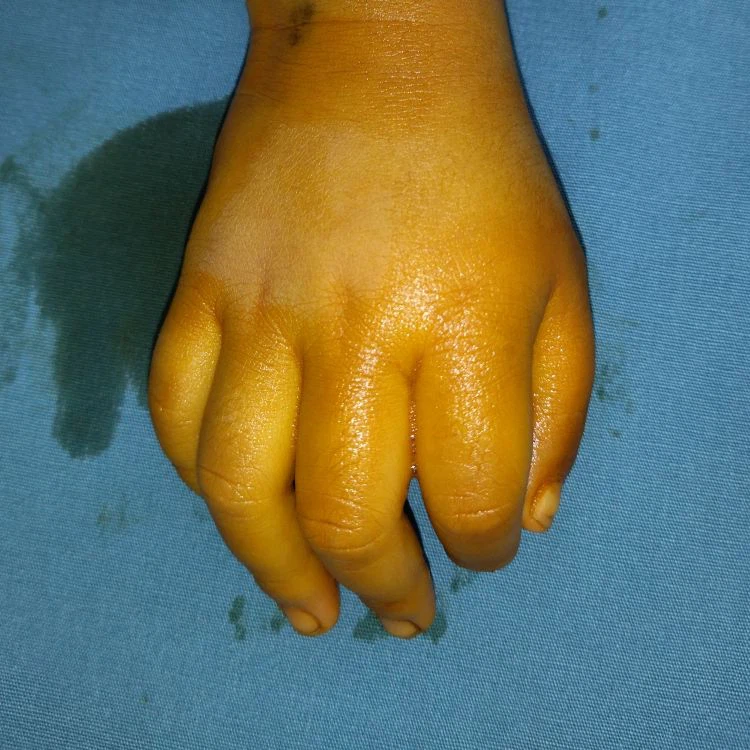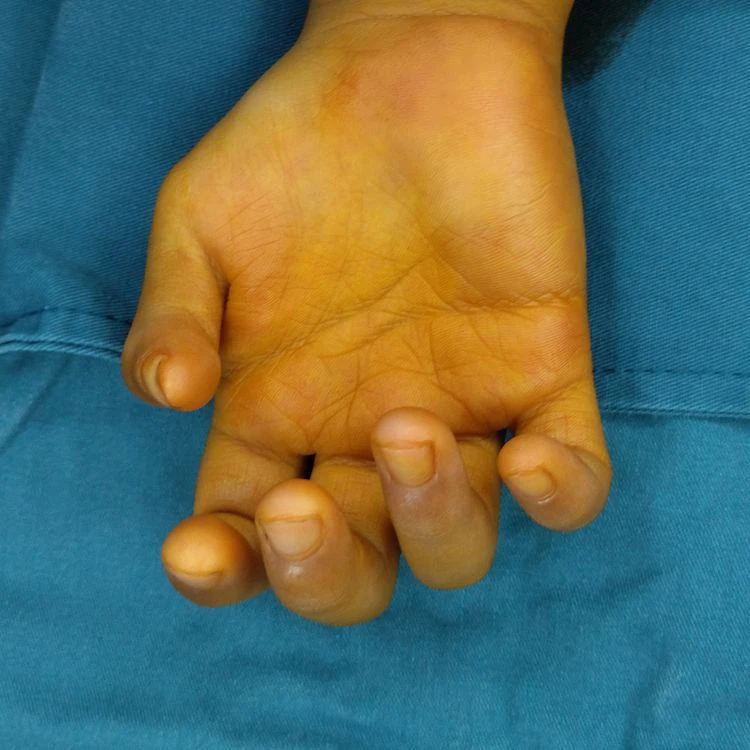what is Thumb Hypoplasia?
Thumb hypoplasia, a less common congenital hand and foot malformation, is a condition characterized by underdevelopment of the thumb. The precise etiology of thumb hypoplasia is not yet fully understood, but it is believed to be associated with factors such as nutritional deficiencies, fetal neurogenic injuries, maternal viral infections, medication use (especially sedative thalidomide), and hypoxia.
what is Thumb Hypoplasia Surgery?
Thumb hypoplasia surgery is a reconstructive procedure that can improve a small or absent thumb. The most common type of surgery for thumb hypoplasia is pollicization, which involves transferring the index finger to the thumb position. This surgery is usually performed when a child is between 6 and 18 months old, but the decision depends on the condition of the index finger. If the index finger can't move independently, the doctor may not recommend pollicization.
Methods of Thumb Hypoplasia Surgery:
Thumb hypoplasia can be categorized into five types based on the degree of anatomical abnormality and appearance of the thumb. Different types of thumb hypoplasia require varying thumb hypoplasia surgery approaches.
- Type I thumb hypoplasia has a relatively minor impact on function and may not necessitate treatment.
- Type II thumb hypoplasia requires tendon transfer treatment.
- Type III and IV thumb hypoplasia can be managed based on patient needs, with options including index finger pollicization, partial metacarpal reconstruction, and metatarsal reconstruction.
- Type V thumb hypoplasia can only be treated through index finger pollicization.
The advantages of our Thumb Hypoplasia Surgery:
Among the five types of thumb hypoplasia, Type IV presents the greatest surgical challenge, particularly in cases of floating thumb preservation surgery.Currently, we employ the technique of partial metacarpal reconstruction of the second metacarpal bone to rebuild the first metacarpal. The thumb hypoplasia surgery is exclusively performed on the hand. The research indicates that after half-palm bone transplant reconstruction, the probability of bone absorption and necrosis is lower compared to metatarsal bone reconstruction.
Moreover, both the donor and recipient areas for bone harvesting can continue to grow postoperatively.



Why Choose Our Thumb Hypoplasia Surgery?
Dr. Jianghai Chen is MD in Surgery from Huazhong University of Science and Technology, Wuhan, China (2003) and PhD from Katholieke Universiteit Leuven, Belgium (2008), also Associate Professor/Chief physician of Hand Surgery, Wuhan Union Medical College Hospital, master supervisor.
Dr. Jianghai Chen's Academic Papers:
- Syndactyly release with the use of the Pelnac™ artificial dermal substitute without skin grafting. J Plast Reconstr Aesthet Surg. 2023 Sep;84:115-120.
- Acellular dermal matrix for one-stage treatment of lower extremity full-thickness skin defect: a case series. BMC Surg. 2023 Jan 24;23(1):17.
- Identification and validation of a ferroptosis-related gene signature for predicting survival in skin cutaneous melanoma. Cancer Med. 2022 Sep;11(18):3529-3541.
Thumb Hypoplasia Surgery Hospital Questions Guide:
FAQ
Q: What are the characteristics of Thumb Hypoplasia?
.
Q: What age is suitable for Thumb Hypoplasia Surgery?
Q: What benefits can Thumb Hypoplasia Surgery bring to children?
Q: What other Thumb Hypoplasia Surgery are there?
Web space surgery: Tightens the skin between the fingers or thumb and fingers
Skin graft: May be needed in some cases
Bone, tendon, ligament, muscle, joint, and/or nerve surgery: May be performed depending on the condition
Hot Tags: thumb hypoplasia surgery, China thumb hypoplasia surgery doctor














